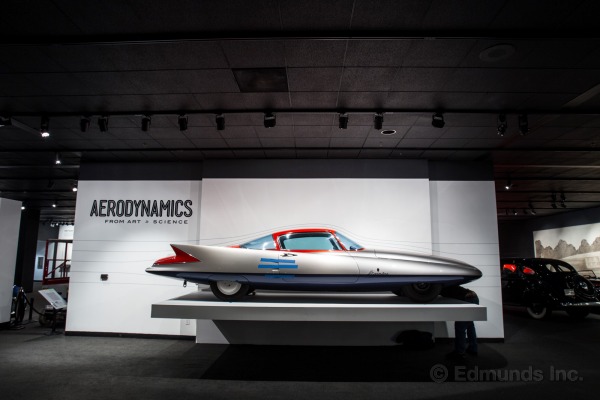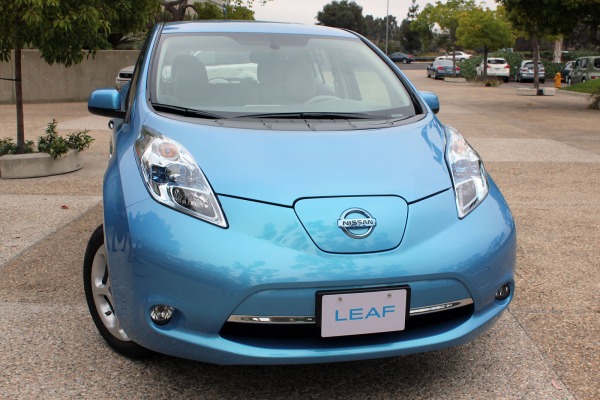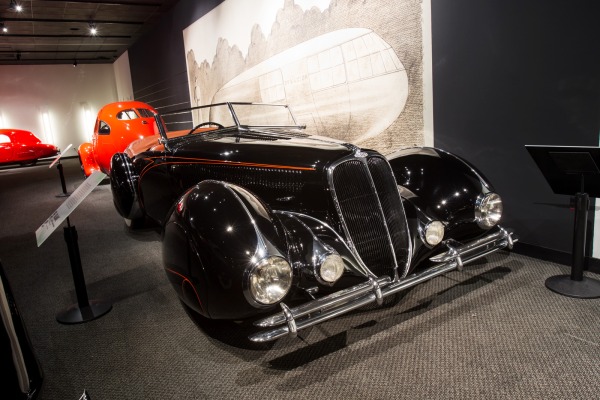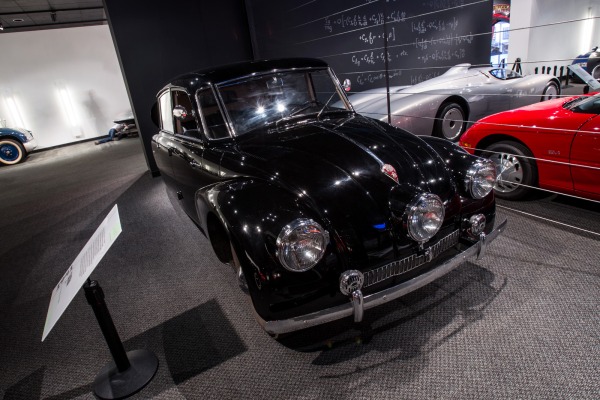
While aerodynamics has long been put to work in automotive design to improve performance, the art and science of making motor vehicles "slippery" is now focused on miles per gallon, not miles per hour.
Compared with most of the vehicles on the road today, tomorrow's cars and trucks are likely to be aerodynamic wonders. Yet many of the design features that will help them move through the air with more efficiency are things that you won't be able to see.
Change Can Cost
The new focus of aerodynamics in cars will be the little details that create drag-inducing turbulence. It hasn't been cost-effective to address these details in the past, but now smoother grilles, cleaner undercarriages and even the gaps between body panels are the things that car designers think about.
As Christopher Chapman, chief designer at Hyundai Design North America, tells us, when a designer sees an automobile these days, he sees an airplane. "In an airplane, all the surfaces are aerodynamic," he says.
Like an airplane, the underside of an automobile is as important to its passage through the air as the top and sides. Chapman continues, "The car has lots of ground effect, and there are lots of improvements that can be done on the underside for tremendous aerodynamic gains. The problem in the past has been that customers have not been willing to pay for things like panels that fill gaps on the underside that they can't see."
With the increased emphasis on fuel efficiency, though, carmakers are spending more on those heretofore "unseen" aero improvements. It's all part of the ongoing effort to reduce aerodynamic drag, which is the combination of factors that impede a vehicle's passage through the air. Wind resistance occurs at the front, as a car tries to push itself through the air. A turbulent vacuum typically is created at the rear of the vehicle and literally pulls it backward.
While aerodynamics affects the entire surface of a vehicle, only the surfaces directly visible to the car buyer have received most of the attention of designers, since the styling improvements could be translated into sales appeal. Today, though, aerodynamics engineers and designers are focusing on previously overlooked areas. They're working on things such as shutters that close grille openings at higher speeds to reduce wind resistance.

Another aero development is the use of the separator, which redirects airflow for smoother passage over and around a vehicle's surfaces. As seen in the patented headlamp assembly of the Nissan Leaf EV (shown above), the odd-looking housing directs airflow over and under the outside mirrors, minimizing the flat surfaces that increase wind resistance and create aerodynamic drag.
Even small things are important tools in the battle to decrease drag. For example, squared corners at bumper and fender junctions smooth airflow, while panels seal the gaps in the undercarriage that create drag.
Expect Evolution, Not Revolution
Achieving even greater fuel efficiency in coming years won't necessarily come at the cost of a radical change in the way cars look.
The basic shape of a car or truck is the most important factor in its aerodynamic performance, says Frank Meinert, an engineer in aerodynamics technical integration at General Motors. And while shapes will evolve, the change isn't likely to be too dramatic.
"It certainly doesn't mean all cars will look like airfoils, or jellybeans," Meinert says. "Consider that drag coefficients have been reduced about 30 percent since 1980, and compare the styling of today's cars to the 1980 models. The changes in the next 10 or 20 years will likely be of similar magnitude."
Like Hyundai's Chapman, Meinert sees much of the aerodynamic work of the future taking place under the hood and under the floor pan.
Slippery Isn't Always Sleek
Up until now, designers and engineers have concentrated on visible surfaces, giving us cars that were streamlined delights in some decades, and geometrically defined planes and angles in other times. Designs changed as theories evolved about how best to manage airflow and all its elements — drag, turbulence and lift.
"But not everything that was streamlined was really aerodynamic, and not everything that's aerodynamic is particularly streamlined," says Leslie Kendall, curator of the Petersen Automotive Museum in Los Angeles, which recently featured an exhibit on automotive aerodynamics.

One example is this curvaceous 1938 Delahaye Type 135M roadster on display in the Petersen aerodynamic exhibit (which runs through May 2013). The car reflects the voluptuous response of automotive designers in France to the streamlined aesthetic of the times, but as Kendall notes, "It is all about design, not scientific principles of aerodynamics. I doubt they even had a wind tunnel to test it."
It's All About Cd
Ever since the 1980s when the Audi 5000 popularized the notion of aerodynamic efficiency, the effective quality of a vehicle's aero profile becomes synonymous with the amount of drag its shape creates as it cuts through the air.
This is expressed as the coefficient of drag, or Cd. The lower the number the better, as Edmunds has explained in this article about drag and fuel efficiency.
A couple of examples will help you understand the scale of Cd measurements. A brick comes in with about a 2.0 Cd; an ultra-boxy 2002 Hummer H1 has 0.70 Cd. The most aerodynamically efficient production car in modern history is the EV1 electric car built by General Motors in limited numbers from 1998-2003, which boasted a 0.19 Cd. (GM has recently said that number probably would be closer to 0.21 with today's more advanced wind-tunnel measurement tools.)
Most cars these days have a Cd that ranges between 0.30 and 0.35. Most trucks and SUVs have a Cd that ranges between 0.35 and 0.45. When fuel efficiency is paramount, designers and engineers can do even better, however. For example, the Nissan Leaf EV has a 0.29 Cd. The Chevrolet Volt plug-in hybrid has a Cd of 0.28. The 2013 Toyota Prius and 2013 Hyundai Sonata hybrids both claim a 0.26 Cd.
Even utility vehicles are getting slippery these days. The 2013 Hyundai Santa Fe has a flat underbody panel that helps reduce drag by 10 percent, which contributes to a 0.34 Cd — well below the average for crossovers and SUVs.

A lot more improvement is possible. Examples of the Aptera prototype were measured with a 0.15 Cd. The Volkswagen XL1 diesel-electric hybrid concept (shown above) has a 0.186 Cd, a contributing factor in the car's ability to achieve 235 mpg.
Science Isn't Always Pretty
Applying real aerodynamic science to car design doesn't necessarily result in beautiful cars like the 1938 Delahaye Type 135M, but it can bring about big improvements in performance. The Prius, for example, gets mixed reviews in the looks department but is undeniably a winner in aerodynamics and fuel efficiency.

The Czechoslovakian-built 1938 Tatra T87 (shown above) had a low-slung front profile, a fastback rear deck with a fin, and skirts over the rear wheelwells. Its 0.36 Cd was impressive at the time. By comparison, the 1935 Chrysler Airflow, a car celebrated for introducing an aerodynamic look to mainstream American automotive design, had a 0.50 Cd.
GM's Meinert estimates that drag coefficients have improved about 30 percent in the past 32 years. A drag improvement of 0.01 equals a fuel economy increase of about 0.2 mpg in a typical car and about 0.1 mpg in a typical truck.
Understanding Airflow
The first automobiles were little more than buggies and carriages with the horses unhitched and replaced by sputtering internal-combustion engines. Aerodynamics did not come into play since the vehicles were too slow to be affected by the air resistance. But at today's highway speeds, a car is using more than half the power at the wheels just to overcome aerodynamic drag, says GM's Meinert.

As carmaker Enzo Ferrari once said: "Aerodynamics are for people who can't build engines." These days, though, even Ferrari is focusing on fuel efficiency. Its new million-dollar flagship model, the 2014 Ferrari Enzo (shown above), will feature a gas-electric hybrid powertrain system wrapped in a lightweight car with a low, rounded nose and squared-off tail. Weight reduction and aerodynamic efficiency have helped improve the Enzo's fuel efficiency by 30 percent, although 15.5 mpg only sounds impressive in the context of the car's 920-horsepower powertrain.
Such fuel economy might not sound like much, but the 30 percent mpg improvement in one year shows how much can be done when designers and engineers dip deeply into their toolboxes. Combining engine and transmission improvements with lightweight materials and improved aerodynamics can go a long way toward helping automakers meet the nation's new fuel economy goals